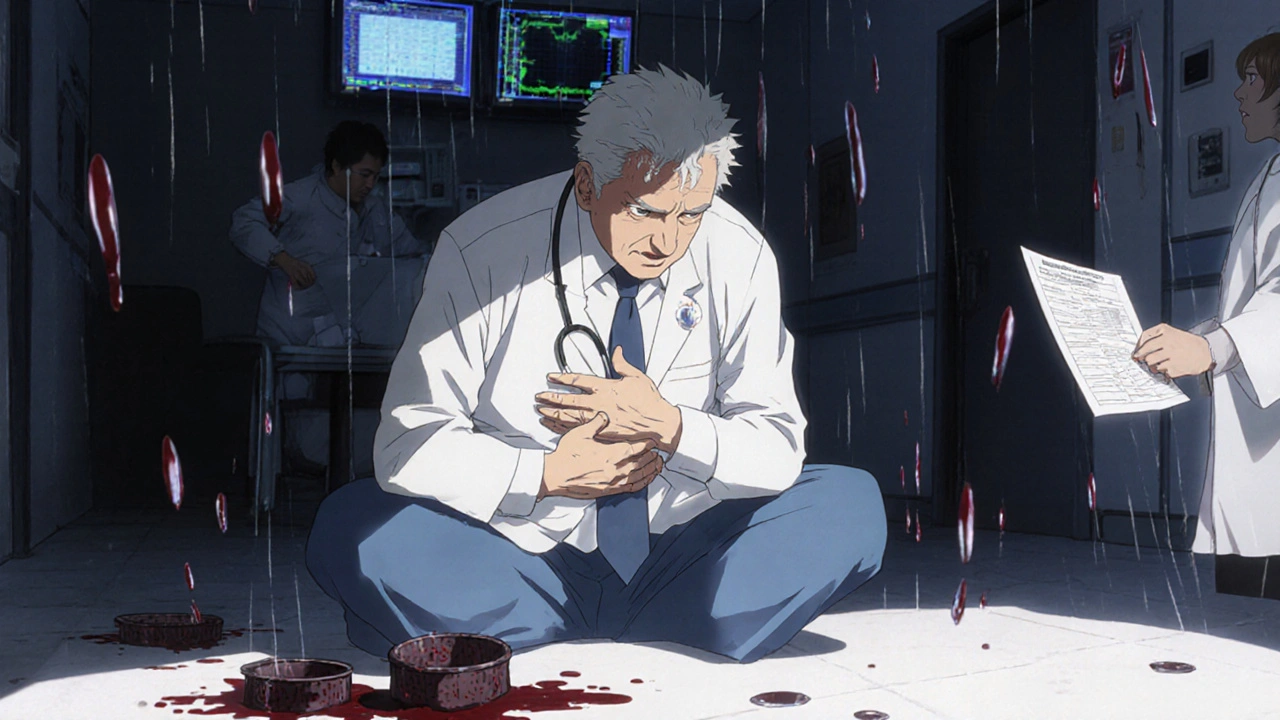Emergency Response Bleeding: What to Do When Seconds Count
When someone is bleeding badly, every second matters. Emergency response bleeding, the immediate actions taken to control uncontrolled blood loss after trauma or injury. Also known as hemorrhage control, it’s not just about bandages—it’s about stopping blood loss before the body runs out of blood. This isn’t theoretical. In real life, a person can die from severe bleeding in under five minutes. That’s less time than it takes to wait for an ambulance to arrive. The difference between life and death often comes down to what the first person on the scene does.
Emergency response bleeding isn’t just for accidents. It applies to knife wounds, car crashes, workplace injuries, even postpartum hemorrhage. The core principles stay the same: apply direct pressure, elevate the wound, and use a tourniquet if needed. You don’t need a medical degree. You need to act fast and stay calm. Studies from the American College of Surgeons show that bystanders who apply pressure right away can reduce death rates by up to 50% in traumatic bleeding cases. That’s not a guess—it’s data from real emergencies.
There are key things to avoid. Don’t remove a soaked bandage and replace it—add more on top. Don’t try to clean the wound during active bleeding. Don’t wait for someone else to step in. And never use a tourniquet unless it’s a life-or-death situation with major limb bleeding. Tourniquets save lives, but they can also cause damage if misused. The goal isn’t to fix the injury—it’s to keep the person alive until professionals get there.
Related to this are tools like hemostatic gauze, pressure dressings, and even household items like clean cloth or towels. These aren’t fancy gadgets—they’re simple, accessible, and proven. In many cases, the best emergency response bleeding kit is the one you already have: a clean shirt, a belt, or your hands. What matters isn’t the tool—it’s the timing and the pressure.
Emergency response bleeding also connects to other critical areas like shock management and airway control. If someone is bleeding out, their body goes into shock. Their skin gets cold and clammy. They might feel dizzy or confused. You can’t stop bleeding and ignore these signs. Keep them warm, keep them lying down, and keep talking to them. It helps keep them conscious and reduces panic—yours and theirs.
There’s a reason you see training videos on CPR and AEDs everywhere—but almost nothing on bleeding control. That’s changing. Organizations like the American Red Cross and Stop the Bleed now push public education because the truth is simple: emergency response bleeding is a skill anyone can learn. You don’t need to be a medic. You just need to know what to do before the ambulance comes.
Below, you’ll find real-world guides on managing bleeding in different settings—from home injuries to post-surgery risks. You’ll see how common medications like aspirin affect clotting, how to recognize when bleeding turns dangerous, and what to do when standard first aid isn’t enough. These aren’t abstract theories. They’re stories from people who’ve been there. And they’re the kind of knowledge that could save someone’s life tomorrow.
